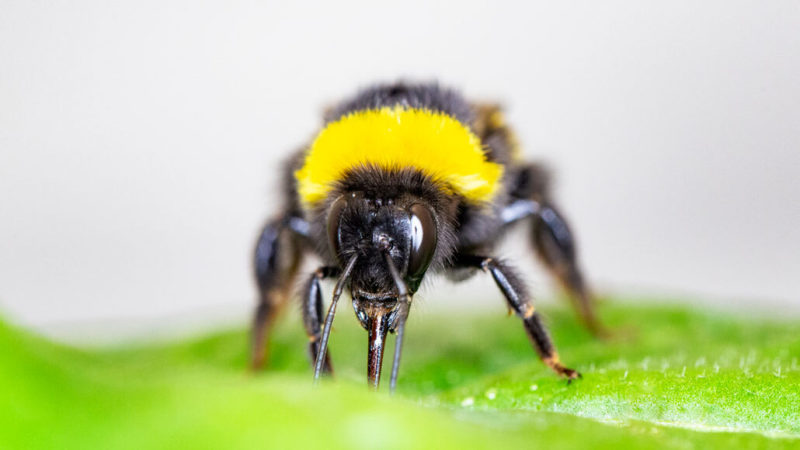Here’s the summer science you might have missed
From COVID-sniffing dogs and sizzling Siberia to new uses for astronaut pee

Lunar bases of the future could be 3-D printed from materials found on the moon, as shown in this artist’s illustration.
© Foster + Partners, ESA
Share this:
- Share via email (Opens in new window) Email
- Click to share on Facebook (Opens in new window) Facebook
- Click to share on X (Opens in new window) X
- Click to share on Pinterest (Opens in new window) Pinterest
- Click to share on Reddit (Opens in new window) Reddit
- Share to Google Classroom (Opens in new window) Google Classroom
- Click to print (Opens in new window) Print
By Janet Raloff
In 2020, the new coronavirus has dominated the news, both at home and around the globe. Even on summer vacation, you probably heard plenty about the pandemic. But there was lots of other science news happening, too. Here are several of the stories you might have missed. Some were important. Many were just fun.
Make extraterrestrial buildings with astronaut pee
When humans travel to the moon or other planets (and such plans are underway), they will need to pack light. It’s too expensive to lug heavy construction materials aboard the spacecraft. So chemist Anna-Lena Kjøniksen and her colleagues have come up with a green alternative: mix local soils with astronaut pee. They confirmed the idea using synthetic urine and faux lunar dirt. Says one scientist contacted for outside comment: “It sounds like such a daft idea. But here we are — it works.”
Even Siberia is now hot, hot, hot
This past June 20, the Siberian town of Verkhoyansk, located above the Arctic Circle, logged a record high temperature of 38° Celsius (100.4° Fahrenheit)! New analyses found that climate change made the unseasonable heat here at least 600 times more likely, and maybe as much as 99,000 times more likely. This record was but one extreme in a long heat wave that triggered wildfires and melting permafrost across Siberia.

Bumblebees force early flower blooming
When bumblebees snip little confetti-like bits out of a plant’s leaves, the bees can prompt a slowpoke plant to bloom early. Depending on plants tested, researchers showed bee-nipping could speed up blooming by two to four weeks. In spring, this newfound behavior could be a lifesaver. It might give new bee colonies the protein-rich pollen they need to feed their young.
‘Smart’ toilets will gather data from every flush
The body’s wastes can say a lot about our health. Engineers are now developing smart toilets to analyze poop and pee. Those data will then move through the internet to an artificial intelligence system. If the AI spies a problem, it can notify your doctor. One system would tell toilet users apart from looking at photos of an individual’s posterior. Don’t worry, though. Researchers promise to keep such “butt-prints” confidential.
Dogs can sniff out new coronavirus in people
Over the past few months, research teams around the world have been training dogs to sniff out the virus that causes COVID-19 from human sweat. Some dogs are so good they can find it every time. They even found infections in people with no symptoms. At least one airport is already using dogs this way to screen airline passengers.
Calculating a dog’s ‘human’ age is remarkably challenging
To figure out the human equivalent for a dog’s age, most people just multiply by seven how long their canine has been around. But they’d be wrong, new analyses show. Genetic markers show dogs start out aging faster than people, then quickly slow down. An 8-week-old puppy is roughly equal to a 9-month-old baby, but a year-old dog is closer to a 31-year-old human. Figuring this all out takes some fancy math, but it’s something an electronic calculator can easily manage.
Pooping birds can seed new waters with fish embryos
Ducks can poop out the live eggs of fish, a new study finds. Soft, jelly-like eggs survived a trip through a bird’s gizzard, which grinds food, and its gut. The gut uses acid to break food down. Some eggs even hatched. The surprising finding suggests birds might be able to seed lakes and streams with new fish, including invasive species.

The electric potential of shadows, any shadows
A new device uses the contrast between bright spots and shade to create an electric current. That current can power small electronics, such as a watch or LED lights. By using shade, “we can harvest energy anywhere on Earth, not just open spaces,” says Swee Ching Tan, who works on the technology. Someday, these generators might produce energy in shadowy spots between skyscrapers, he says, or even indoors.
Smoke from Australian wildfires rose to record heights
Australia’s most recent wildfire season was so severe that smoke from the fires reached new heights, more than 31 kilometers (more than 19 miles) up, new data show. The fires fueled huge thunderclouds, which drew between 300,000 and 900,000 metric tons of smoke into the stratosphere — more smoke than any known inferno. The high-altitude plume was shielded by winds that whirled around it at 54 kilometers (33 miles) per hour. Researchers say still don’t know what whipped up this newly discovered wind event.
Planet’s darkest fish hides in the ocean depths
Little of the sun’s light reaches the deep sea. But bioluminescent organisms can brighten the inky darkness. Avoiding discovery here is “like trying to play hide and seek on a football field,” says Karen Osborn. “There’s nowhere to hide.” Unless, that is, you’re the planet’s darkest fish. At least 18 species of deep-sea fishes evolved to be ultra-black, her team finds. By soaking up almost all light that hits their skin, these fish are almost invisible.







